10+ Best Continuous Deployment Tools for 2025
Continuous Deployment is a powerful practice for rapidly releasing code changes without manual intervention. It enables teams to respond quickly to customer feedback and rapidly deploy fixes, new features, and enhancements. This guide will explore some of the most popular Continuous Deployment tools available, including their features and benefits.
We’ll also discuss the best practices for implementing Continuous Deployment so that you can make the most of it in your organization. By the end of this guide, you’ll have a better understanding of Continuous Deployment and the tools available to help you implement it. So let’s get started!
What is Continuous Deployment?
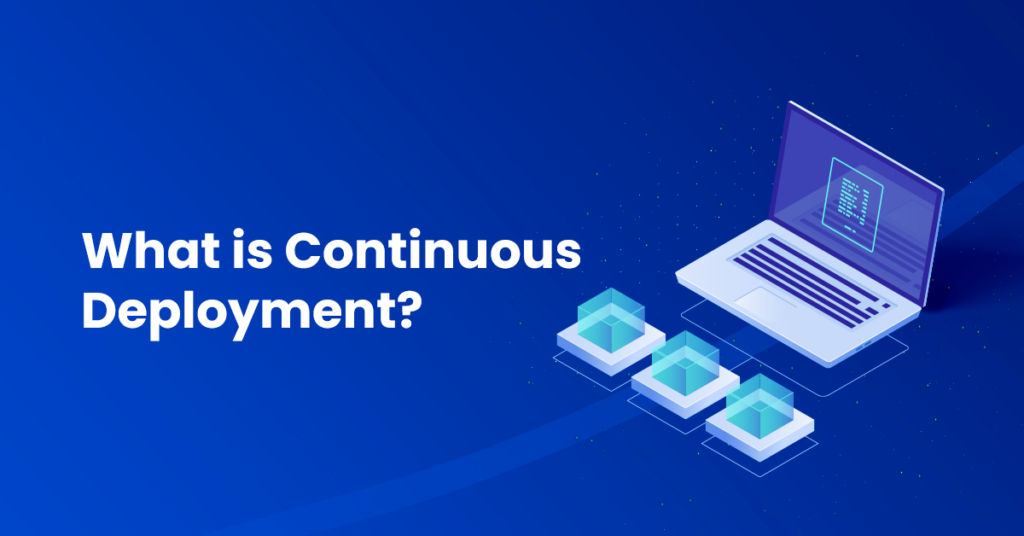
Continuous Deployment is a vital tool for modern software development and Deployment. It is the process of automatically releasing code changes to production without manual intervention or downtime. Continuous Deployment enables teams to deploy new features quickly and consistently, allowing for faster innovation and better customer experience.
It is a form of continuous delivery and includes automated tests, deployment pipelines, and other automation tools. Continuous Deployment offers several benefits, such as faster time to market, fewer manual errors, and improved customer experience. It also allows for more frequent and reliable releases, improved application performance, and better collaboration between development and operations.
What are the Benefits of Continuous Deployment?
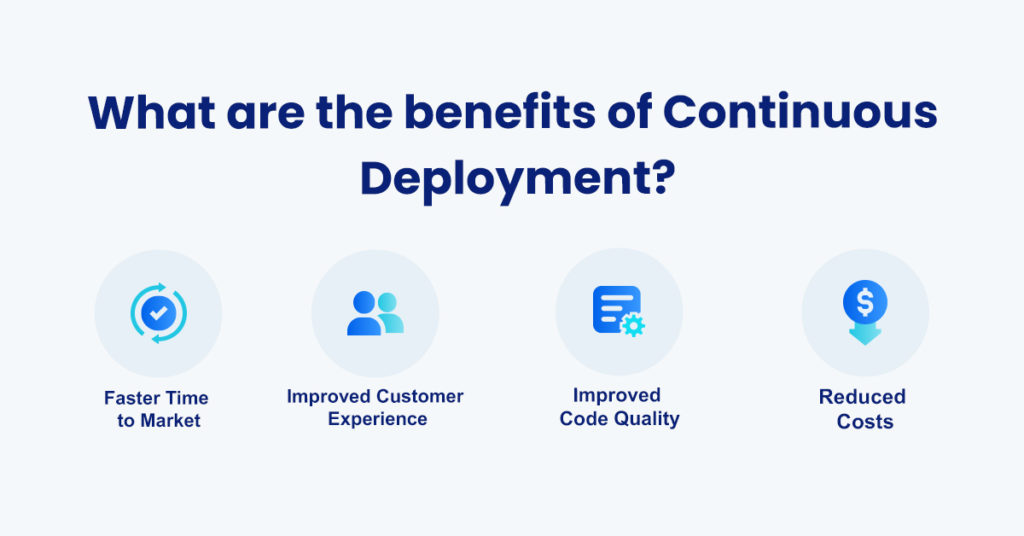
Continuous Deployment has numerous benefits for organizations, including:
Faster Time to Market
Continuous Deployment enables developers to quickly and easily deploy new features, bug fixes, and updates, meaning they can get their software to market faster than ever before. With continuous Deployment, developers can quickly and easily make changes to their software and immediately deploy them. This reduces the time it takes to market a new product or feature, giving businesses a competitive edge.
Improved Customer Experience
Continuous Deployment software also improves the customer experience. When software is launched more quickly, customers have faster access to new features and bug fixes. This can result in a better user experience, as customers will be able to access the latest features and bug fixes more quickly. Additionally, customers will be more likely to use the software if they know it is regularly updated and new features are added regularly
Improved Code Quality
Continuous Deployment also helps improve code quality. By deploying code more frequently, developers are able to identify and fix bugs before they become significant issues quickly. This helps ensure that the code is high quality and works as expected. Additionally, continuous Deployment helps ensure that the code is always up-to-date, which can help prevent security vulnerabilities.
Reduced Costs
Continuous Deployment can also help reduce costs. By deploying code more quickly and easily, developers can focus their efforts on other tasks instead of manually deploying software. This can result in cost savings, as developers can get more done quickly. Additionally, by using DevOps deployment tools to rapidly identify and fix bugs, businesses can avoid costly downtime and lost revenue.
AWS Cloud Cost Allocation: The Complete Guide
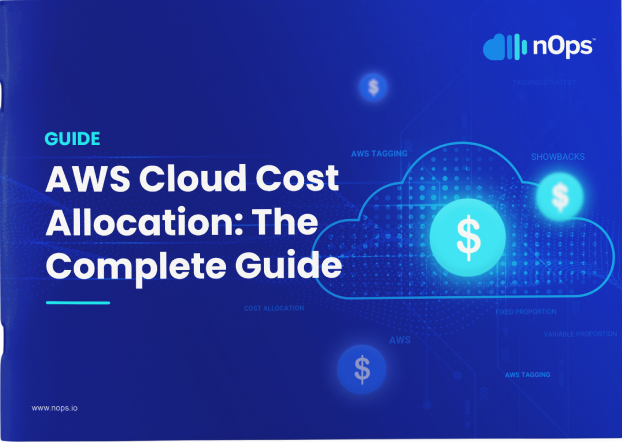
10+ Best Continuous Deployment Tools In 2025
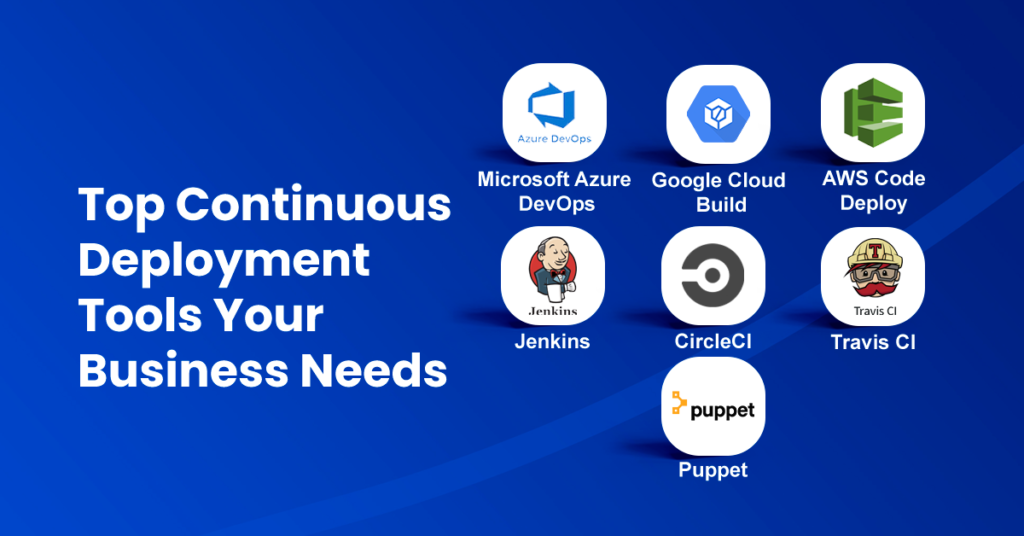
Our list of top continuous deployment platforms begins with…
1. Microsoft Azure DevOps
Microsoft Azure DevOps is a set of services that provide an end-to-end solution for developing and deploying applications on the Microsoft Azure cloud platform. It combines the power of Azure with the flexibility of DevOps, allowing teams to create, manage, and deploy applications with agility and speed. It provides a robust set of tools for continuous integration, continuous delivery, and automation, allowing teams to develop and deploy applications quickly. It also supports collaboration and communication between teams and stakeholders, making it easy to manage projects and ensure successful delivery.
Best features:
- Automate builds, tests, and deployments across any platform with powerful CI/CD pipelines
- Support for deploying to VMs, containers, serverless, and Kubernetes environments
- Includes Git repos, agile boards, and backlogs for end-to-end project tracking
- Add approvals, gates, and quality checks before and after deployments
- Integrates with 1,000+ third-party tools through the Azure DevOps Marketplace
- Designed for scale with role-based access, auditing, and parallel job support
Pricing:
Free for 5 users. Beyond that, it’s $6/user/month plus optional charges for more parallel jobs.
2. Google Cloud Build
Google Cloud Build is a continuous integration and continuous delivery (CI/CD) platform from Google Cloud Platform (GCP). It automates the building, testing, and deploying of software, making it easier for developers to release code changes to production quickly. It supports various languages, build environments, and runtimes and integrates with other GCP services such as App Engine, Cloud Storage, BigQuery, and Cloud Spanner.
Best features:
- Build, test, and deploy across multiple environments with fast, scalable pipelines
- Native integrations with GKE, Cloud Run, App Engine, and Firebase Hosting
- Supports Docker, Maven, Gradle, Bazel, and custom build steps via YAML
- Secure builds with VPC Service Controls, Binary Authorization, and IAM roles
- Integrates with GitHub, Bitbucket, GitLab, and Google Cloud Source Repositories
- Offers detailed logging, metrics, and debugging through Cloud Logging and Monitoring
Pricing:
First 120 build minutes per day are free; after that, pricing starts at $0.0034 per build minute.
3. AWS CodeDeploy
AWS CodeDeploy is an Amazon Web Services (AWS) service that automates software deployments to Amazon EC2 instances, on-premises instances, serverless Lambda functions, or Amazon ECS services. It automates application deployments to Amazon EC2 instances, on-premises hosts, or serverless Lambda functions. It includes features such as automatic validation of the deployment configuration, automatic rollback on failed deployments, and integration with AWS services such as Amazon CloudWatch and Amazon CloudFormation. CodeDeploy can also be used to create and manage blue/green deployments.
Best features:
- Automate deployments to EC2, Lambda, on-premises, and ECS with minimal downtime
- Support for in-place and blue/green deployment strategies across all environments
- Integrates with Amazon CloudWatch, CloudTrail, and CloudFormation for full-stack automation
- Roll back automatically on failed deployments with configurable triggers and hooks
- Centralize deployment control with approval gates and lifecycle event hooks
- Supports integration with GitHub, Bitbucket, Jenkins, and other CI tools
Pricing:
Free for EC2 and Lambda deployments; $0.02 per on-premises instance update.
4. Jenkins
Jenkins is an open-source automation server for continuous integration and delivery in DevOps. It automates repetitive tasks from building, testing, and deploying software. It helps developers quickly and easily create, test, and deploy their code. Jenkins is a popular tool for automating software development and operations tasks, and many organizations use it to streamline their software delivery process. It is highly scalable and supports multiple plugins, allowing users to customize their deployment process.
Best features:
- Automate builds, tests, and deployments across any environment or tech stack
- Supports 1,800+ plugins for source control, build tools, containers, and more
- Highly extensible with custom scripts, shared libraries, and pipeline-as-code
- Compatible with Docker, Kubernetes, GitHub, GitLab, and Bitbucket integrations
- Enables parallel and distributed builds for scalable automation
- Provides detailed logging, monitoring, and alerting through third-party tools
Pricing:
Free and open-source; enterprise support available through vendors like CloudBees.
5. CircleCI
CircleCI DevOps is a suite of continuous integration and delivery (CI/CD) tools designed to help develop, test, and deploy software quickly and reliably. It provides a comprehensive platform that automates the processes of building, testing, and deploying software, allowing developers to focus on creating the best product possible. It also offers a rich set of features, such as support for multiple languages, on-premises or cloud-based platforms, and collaboration tools.
Best features:
- Automate testing and deployments with highly customizable YAML-based pipelines
- Native integrations with GitHub, GitLab, Bitbucket, Docker, and Kubernetes
- Supports caching, parallelism, and resource classes to speed up builds
- Offers insights and monitoring with detailed build metrics and dashboards
- Secure execution with isolated Docker, VM, or macOS environments
- Enables advanced workflows, approval gates, and reusable pipeline components
Pricing:
Free plan includes 6,000 build minutes/month; paid plans start at $15/month for more users and compute.
6. Travis CI
Travis CI is a continuous integration and delivery service that allows developers to quickly and easily test and deploy code changes. Developers use it to automate the process of testing, building, and deploying code.
Best features:
- Automate builds, tests, and deployments triggered by GitHub or Bitbucket commits
- Supports multiple programming languages and environments out of the box
- Easily configurable with
.travis.ymlfor flexible CI/CD pipelines - Integrates with Docker, AWS, Google Cloud, Heroku, and more
- Offers build matrices, environment variables, and encrypted secrets
- Provides logs, job histories, and notifications for pipeline visibility
Pricing:
Free for public repositories; private repo plans start at $69/month.
7. Puppet
Puppet is an open-source configuration management tool that allows developers to configure and deploy applications automatically. It is designed to be used in both cloud-based and on-premises environments and supports multiple languages and frameworks.
Best features:
- Automate infrastructure configuration across cloud, hybrid, and on-premises environments
- Uses a declarative language to define desired system states and enforce compliance
- Supports a wide range of OSes, tools, and frameworks with reusable modules
- Integrates with tools like Git, Jenkins, Docker, and AWS for end-to-end automation
- Offers role-based access control, audit logs, and reporting for governance
- Scales to manage thousands of nodes with centralized control and orchestration
Pricing:
Open-source version is free; Puppet Enterprise pricing starts at $120/node/year.
8. Rundeck
Rundeck is an open-source runbook automation tool that enables teams to define, schedule, and execute workflows across diverse infrastructure. It provides a centralized web interface, command-line tools, and a REST API, facilitating seamless integration with existing automation tools and scripts. Rundeck supports both on-premises and cloud environments, offering flexibility and scalability for various operational needs.
Best features:
- Automate workflows and tasks across diverse systems with a centralized interface
- Supports job scheduling, ad-hoc commands, and complex workflow orchestration
- Integrates with tools like Ansible, Puppet, Chef, Docker, and Kubernetes
- Provides role-based access control and detailed logging for auditability
- Offers a plugin architecture for extended functionality and integrations
- Available in both open-source and enterprise editions with additional features
Pricing:
Open-source edition is free; enterprise edition pricing varies based on features and support options.
9. Codeship
Codeship is a cloud-based continuous integration and delivery (CI/CD) platform designed to automate the testing and deployment of code changes. It offers two versions: Codeship Basic, which provides a turnkey environment for simple workflows, and Codeship Pro, which supports Docker and custom workflows for more complex CI/CD requirements. Codeship integrates seamlessly with popular version control systems like GitHub and Bitbucket, enabling developers to streamline their development processes and deliver code more efficiently
Best features:
- Automate builds, tests, and deployments with customizable workflows
- Supports Docker, parallel testing, and deployment pipelines
- Integrates with GitHub, Bitbucket, AWS, Heroku, and other services
- Provides a simple UI and configuration-as-code options
- Offers real-time build logs and notifications for monitoring
- Scales with your team, supporting both small projects and complex applications
Pricing:
Plans start at $49/month for the Basic Starter plan; Codeship Pro is available at $75/month.
10. Bitbucket
Bitbucket is a Git-based source code management platform developed by Atlassian, offering robust collaboration features for teams. It integrates seamlessly with Atlassian tools like Jira and Confluence, providing a unified environment for code development, testing, and deployment. Bitbucket Pipelines, its built-in CI/CD service, enables automation of workflows directly within repositories, facilitating efficient software delivery processes.
Best features:
- Automate builds, tests, and deployments with integrated Bitbucket Pipelines
- Supports YAML-based configuration for customizable CI/CD workflows
- Seamless integration with Jira, Trello, and other Atlassian products
- Offers over 100 pre-built integrations through Bitbucket Pipes
- Provides deployment environments for development, staging, and production
- Includes features like merge checks, code insights, and branch permissions
Pricing:
Free for up to 5 users with 50 build minutes/month; Standard at $3.30/user/month with 2,500 build minutes; Premium at $6.60/user/month with 3,500 build minutes.
11. Gitlab
GitLab is an all-in-one DevSecOps platform that provides source code management, CI/CD automation, security, and project planning in a single application. It enables teams to collaborate on code, automate testing and deployment, and maintain compliance across the software development lifecycle. GitLab supports both cloud-hosted and self-managed deployments, offering flexibility for organizations of all sizes.
Best features:
- Built-in CI/CD pipelines with YAML configuration for automated testing and deployment
- Advanced security features including SAST, DAST, and dependency scanning
- Integrated project planning tools like issue tracking, epics, and roadmaps
- Merge request approvals, code reviews, and protected branches for code quality
- Scalable infrastructure with support for Kubernetes and multi-cloud environments
- Comprehensive audit logs and compliance management for regulatory adherence
Pricing:
Free tier includes 400 CI/CD minutes/month and up to 5 users; Premium at $29/user/month with 10,000 CI/CD minutes; Ultimate at $99/user/month with 50,000 CI/CD minutes and advanced security features.
How nOps Helps with Faster and More Efficient Deployment
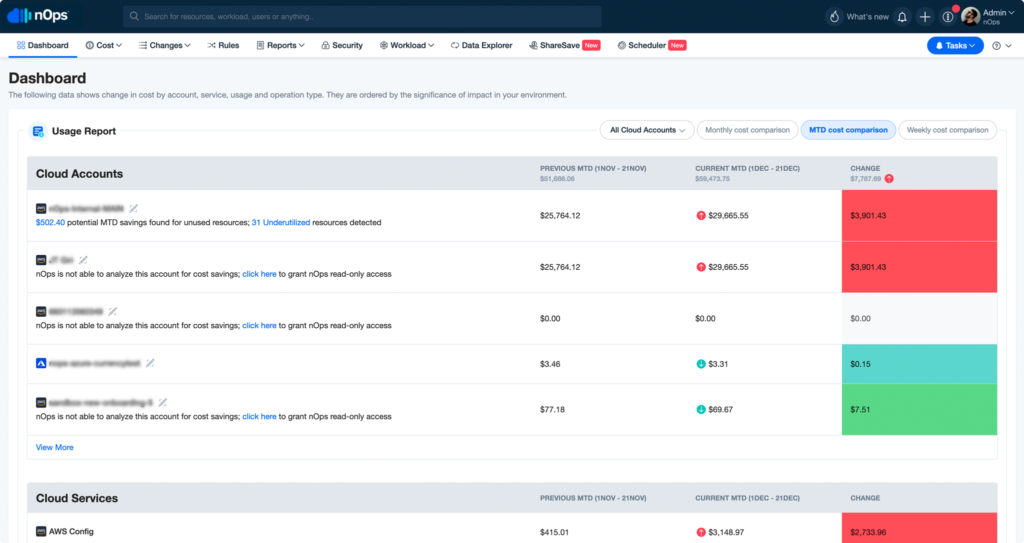
nOps is a G2 5-star rated cloud cost optimization tool built for AWS. By optimizing compute, commitments, and resource efficiency, nOps helps DevOps teams accelerate continuous deployment—without sacrificing cost control or infrastructure governance.
- ✅ Automate cost-optimized compute provisioning for every deployment with Compute Copilot, ensuring stability, scalability, and lowest possible price across EC2, EKS, and Spot
- ✅ Eliminate manual commitment management during release cycles—nOps dynamically adjusts Reserved Instances and Savings Plans to avoid waste and overpayment
- ✅ Ensure full visibility into deployment impact on cloud costs with real-time dashboards and historical trend analysis by service, team, and application
- ✅ Maintain speed and governance with built-in workload automation and policy controls that support continuous delivery without financial risk
- ✅ Enable DevOps to deploy with confidence knowing all underlying infrastructure is continuously rightsized, optimized, and compliant
- ✅ Track cost anomalies and deployment-driven usage spikes as they happen, with alerts that help teams respond fast and stay within budget
nOps was recently ranked #1 with five stars in G2’s cloud cost management category, and we optimize $2+ billion in cloud spend for our customers.
Join the DevOps teams using nOps to get full visibility into cloud costs and automate infrastructure decisions with confidence by booking a demo with one of our AWS experts.
Frequently Asked Questions (FAQ)
Which tool is used for continuous deployment?
Popular tools for continuous deployment include Jenkins, GitLab CI/CD, CircleCI, Argo CD, and Spinnaker. These tools automatically deploy code to production after it passes testing, enabling faster release cycles. The best choice depends on your tech stack, deployment strategy, and integration with existing CI/CD pipelines.
What are CI tools and CD tools?
CI tools (Continuous Integration) automate code integration and testing, ensuring new commits don’t break the build. CD tools (Continuous Delivery/Deployment) automate packaging, release, and deployment to staging or production. Together, they support faster, safer software releases through automation, version control integration, and repeatable build-test-deploy pipelines.
Is Jenkins a continuous deployment tool?
Yes, Jenkins can be used for continuous deployment when properly configured. It automates code building, testing, and deployment using pipelines and plugins. While Jenkins is primarily known as a CI tool, it supports CD workflows as well, making it a versatile option for end-to-end automation.
What is the best CI CD tool?
There’s no single “best” tool—GitHub Actions, GitLab CI/CD, CircleCI, and Jenkins are all strong contenders for best continuous delivery tools. GitLab offers an all-in-one DevOps platform. GitHub Actions integrates seamlessly with repositories. Jenkins is highly customizable. Choose based on team size, existing tools, and whether you need cloud-native, open-source, or enterprise-grade features.






